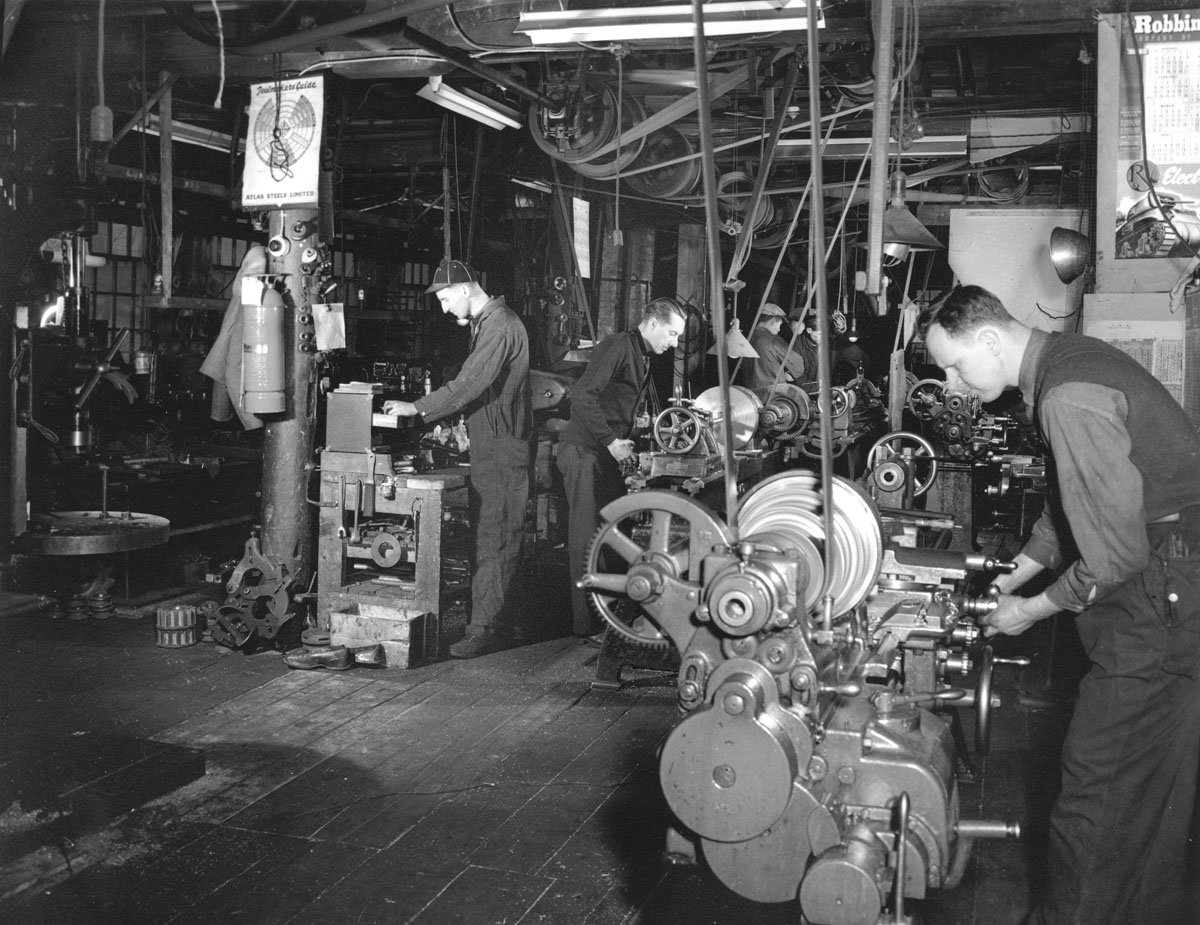
Photo courtesy NS Archives
History of the Lunenburg Foundry
The idyllic Canadian east coast town of Lunenburg, Nova Scotia has long been famous for its colourful and unique buildings, scenic harbour and its well-deserved title as a UNESCO World Heritage site. Originally a Mi’kmaq settlement, it was known as Merligueche. French, English (and later German) settlers arrived beginning in the early 1600s and the town was officially established in 1753 by British Protestants. Today, tourism is a thriving industry but it has been its association with the sea that has sustained it through more than two centuries. Its fishing and shipbuilding industries grew to become internationally famous and so did several businesses that are still thriving today.
Lunenburg Industrial Foundry and Engineering (LIFE) has been an integral part of Nova Scotia’s maritime history. In 1891 four men from Yarmouth founded the Lunenburg Iron Company at the edge of Lunenburg’s harbour. The location was ideal because of its easy access to water and sand, both important elements to this growing business. But growth and development was never easy.
As the fishing industry rapidly developed, there was a need for hardware for the fishing fleet, but the Foundry focused primarily on building wood stoves for homes in the early days. In 1897, after only six years, the company ceased production citing financial difficulties.
Resurrected in 1899 as the Lunenburg Foundry Company Limited by A.C. Thompson of North Sydney, the company began to fare well until a devasting fire destroyed most of the plant in 1905. By then, prominent community leaders realized the value of having a foundry in the town and raised enough capital to form a new company which continued to produce wood stoves for domestic use, adding marine stoves as a new product line.
The turn of the century brought exciting industrial changes worldwide, and Lunenburg found itself uniquely positioned to develop into an important and influential leader in Maritime industry. In 1907, the company was once again reorganized and in 1912, John James Kinley became president of the company as its “guiding star.” The fishing industry continued to grow and the docks of Lunenburg were heavily laden with drying cod while the harbour was full of Grand Banks fishing schooners. The town was bustling and prosperous.
By the early 1920’s, when the Atlantic Coast fishing fleet was converting from sail to power to diesel, the Foundry was building diesel engines as well as many parts for schooners which included illicit rumrunning vessels that came and went. The famous racing schooner “Bluenose”, built in Lunenburg, was originally outfitted with a Foundry steering wheel and steering gear, deck pumps, hawse pipes and other deck fittings. When its racing days were over, the Foundry installed a diesel engine too. In the 30’s the Lunenburg Foundry Garage was established to handle the needs of the rising popularity of automobiles.
And then came World World II, a pivotal time of dramatic change and development for both Lunenburg and its Foundry operations.
Lunenburg had become an alternative safe harbour outside Halifax and a staging ground for the frequent Atlantic convoys in the allies fight against the Nazis. When Germany invaded Norway, many Norwegian fisherman and their vessels were left without a safe port to return to. Foundry president and by then Federal Minister, J.J. Kinley, reached out to the nomadic Norwegians and offered them refuge in Lunenburg. Camp Norway was quickly created to house the displaced Norwegian Navy and the Foundry offered its services to them and their fishing fleet. It was a smart business move in classic Maritime humanitarian style!
The wartime years saw huge growth in the Foundry workforce, increasing from less than a hundred to well over five hundred employees who worked on Navy vessels and refits of commercial ships for naval duty. In addition, the company continued serving the fishing fleet in the local coastal area.
After the war, the Foundry got back to the business of constructing stoves and built over one thousand heating systems in 1946 alone. But the demand for stoves diminished over time and again the Foundry needed to reinvent itself to keep up with the times. John Kinley, Jr. joined the company in 1950 and within a short time he led the company more deeply into the ship building business. The first steel ship ever constructed in Western Nova Scotia, the “Prima Vista” was entirely built, outfitted and launched by Lunenburg Foundry & Engineering Limited.
Founded in the days of “wooden ships and iron men,” Lunenburg Industrial and Engineering, still under the strong leadership of the Kinley family, has continued to stay in the forefront in the modernization of the fishing and shipbuilding industries of Canada’s Atlantic regions.
Besides the iconic wood stoves and smaller hardware goods for fisherman and homes, it has played an important part in the rich maritime history of Canada’s east coast. Besides the well-known “Bluenose”, with its ubiquitous Canadian image, the Foundry has been linked to some legendary Maritime schooners. The HMCS “Grand Mere”, the HMCS “Arnprior,” Admiral Byrd’s “The Bear” and Captain Archie Publicovers’ “Island Trader” have all put in time at the docks of the Lunenburg Foundry and share in the company’s rich history in the colourful and enchanting town of Lunenburg, Nova Scotia.
